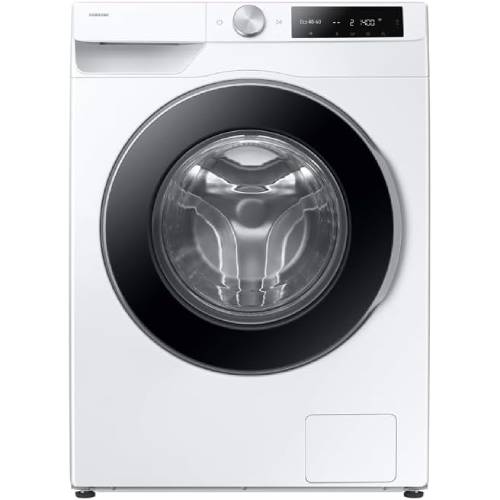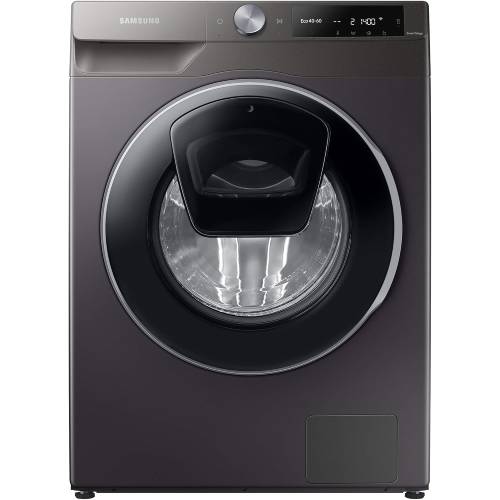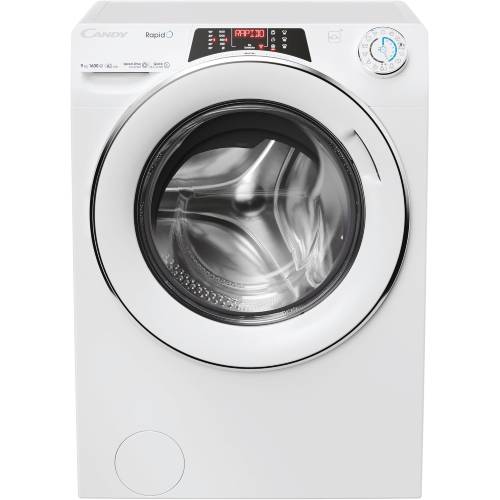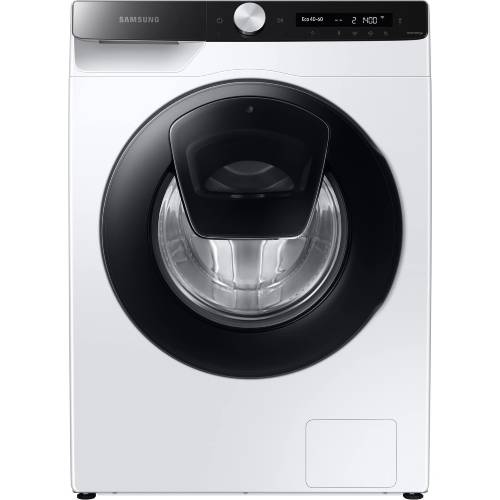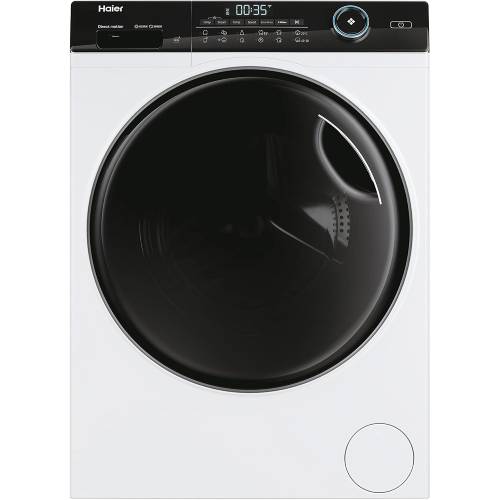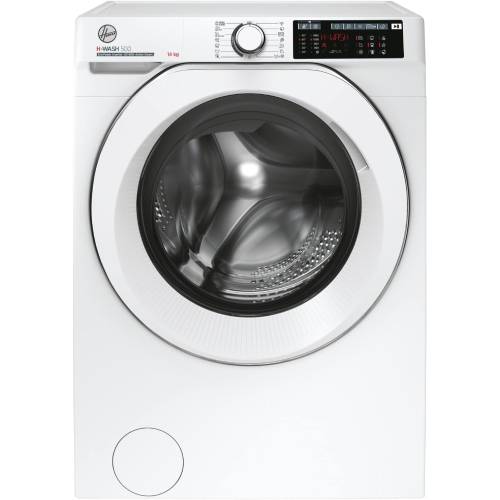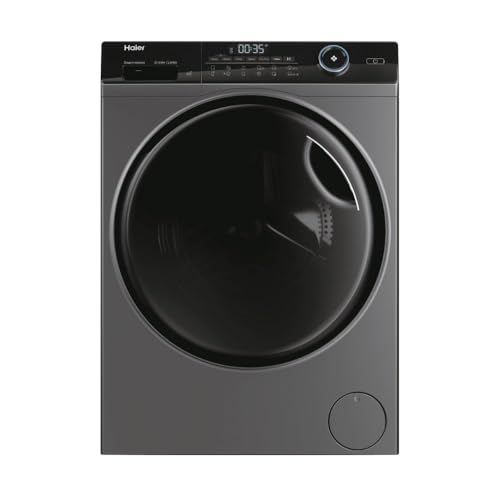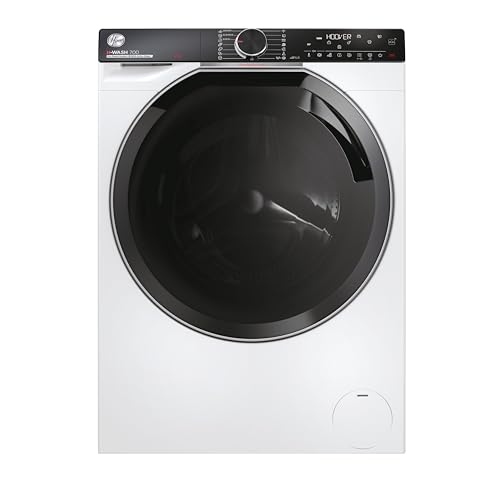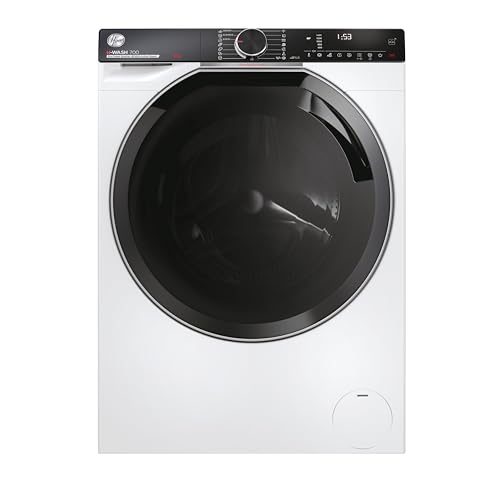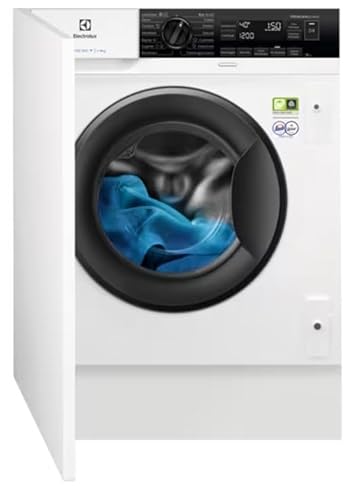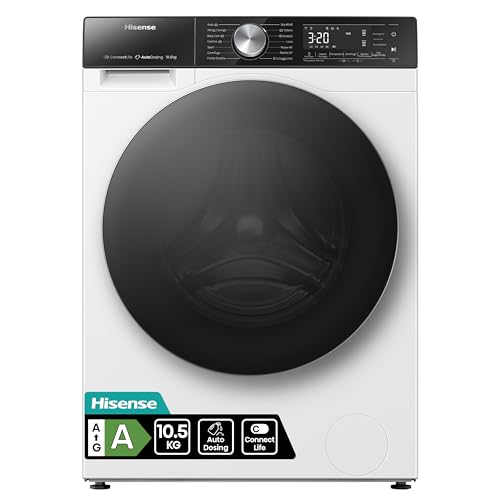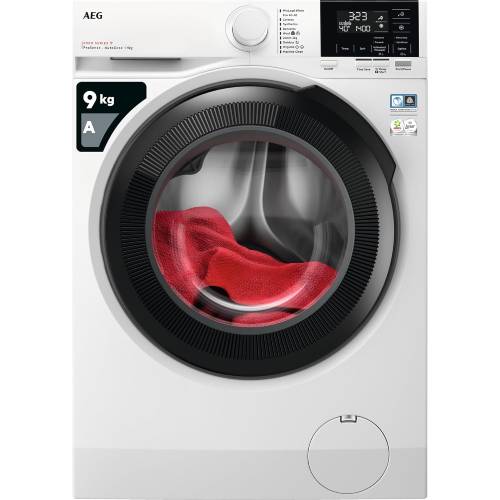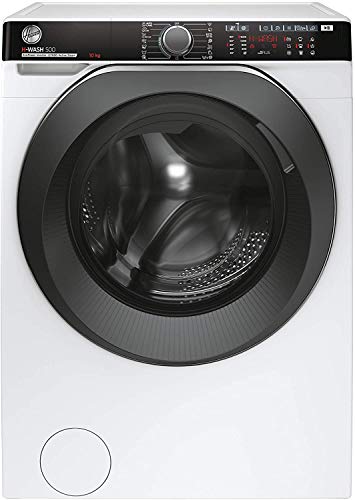What does it mean when a washing machine is A-rated?
When a washing machine belongs to energy efficiency class A, it means the machine is highly energy-efficient and consumes less energy compared to standard washing machines. The European Union's washing machine labelling system, updated in March 2021, uses a scale ranging from A to G (previously A+++ to D).
A-rated washing machines are the most efficient, characterised by reduced energy consumption. The distribution of energy classes among all washing machines available on the market is as follows.
- Class A: 48%
- Class B: 15%
- Class C: 12%
- Class D: 16%
- Class E: 6%
- Class F: 3%
- Class G: 0%
Each washing machine has an energy label that clearly displays its classification.
The following chart illustrates the distribution of energy classes among washing machines.
[pie-chart-33322714]
How are energy classes calculated?
The energy efficiency classes of washing machines are determined by the Energy Efficiency Index (EEI), calculated using the formula:
EEI = (AEc/SAEc) * 100
- AEc (Annual Energy Consumption): represents the energy consumed annually by the washing machine, based on 100 standard cycles using the Eco 40-60 program under real conditions.
- SAEc (Standard Energy Consumption): the standard energy consumption of the washing machine, determined according to EU-approved formulas.
Energy efficiency classes are based on the EEI value, with the following classification.
- Class A: EEI ≤ 52
- Class B: EEI between 52 and 60
- Class C: EEI between 60 and 69
- Class D: EEI between 69 and 80
- Class E: EEI between 80 and 91
- Class F: EEI between 91 and 102
- Class G: EEI ≥ 103
The European Union introduced energy consumption labels in 1992 with Directive 92/75/EC. These labels were updated in 2010 and again in 2021:
- From 2010 to 2021, energy labels used a scale from A+++ to D, but over 55% of washing machines on the market were rated A+++, making it difficult to differentiate between models.
Since 2021, the new energy label has introduced a simplified scale from A to G, based on 100 cycles of the Eco 40-60 program.
Previous labels also used the EEI, but based on 220 standard cycles (a mix of full and partial loads). The current system is based on 100 Eco 40-60 cycles, providing a more accurate measurement of energy consumption under real conditions.
The main differences between old and new energy labels, besides the change in the energy efficiency scale, are as follows.
- Energy consumption: The new label shows energy consumption for 100 cycles, whereas the old label indicated consumption per single cycle.
- Rated capacity: The capacity now refers to the Eco 40-60 program, representing typical use, rather than a generic capacity.
- Water consumption: Water consumption per cycle is now indicated.
- Noise emissions: The new labels show only the noise level during the spin phase, along with a noise emission class (from A to D). Previously, noise levels during washing and spinning were reported separately.
- Program duration: The duration of the Eco 40-60 program is specified.
The best washing machines with energy class A are as follows.
- Samsung WW90DG6U85LEU1 WW6400D (Overall score: 8.5 points; Capacity: 9 kg)
- Samsung WW90T554DAN/S1 WW5500T (Overall score: 8.48 points; Capacity: 9 kg)
- Samsung WW90T684DLN WW6000T (Overall score: 8.37 points; Capacity: 9 kg)
How many kWh does an energy class A washing machine consume?
An A-rated washing machine consumes between 40 and 56 kWh per 100 cycles, with an average of around 49 kWh. Energy consumption also depends on the machine's capacity. For example, a 7 kg washing machine typically consumes 44-46 kWh per 100 cycles, an 8 kg model around 47-48 kWh, while a 9 kg model consumes 48-50 kWh.
By comparison, washing machines in energy class B consume an average of 55 kWh per 100 cycles (12% more than class A), those in class C consume on average 62 kWh per 100 cycles (27% more than class A), and those in class D consume around 69 kWh per 100 cycles (40% more than class A).
The following list includes washing machines with the lowest energy consumption.
- AEG LR8H84BBY 8000 Series PowerCare (Energy consumption: 38 kWh/100 cycles per 100 cycles; Capacity: 8 kg)
- Candy Miniaqua CW50-BP12307G-S (Energy consumption: 39 kWh/100 cycles per 100 cycles; Capacity: 5 kg)
- Haier HW50-BP12307 MiniDrum (Energy consumption: 39 kWh/100 cycles per 100 cycles; Capacity: 5 kg)
Are A-rated washing machines better than those in other classes?
Washing machines in energy class A generally offer superior performance compared to those in other energy classes. They achieve an average overall score of 7.5 points, while class B machines score 7.1, class C machines score 6.7, class D machines score 6.1, class E machines score 5.8, and class F machines score 5.4.
The following chart shows the classification of washing machines within energy classes based on their average overall score.
[horizontal-chart-44111973]
This difference is mainly because A-rated washing machines are generally more expensive and equipped with advanced technologies such as inverter motors. Additionally, A-rated washing machines receive the highest user ratings, with an average score of 8.2 points.
The following A-rated washing machines have the highest user ratings.
- Samsung WW80CGC04DABEU WW5000C (User rating: 9.04 points; Capacity: 8 kg)
- Midea MF20EW100WB (User rating: 9.04 points; Capacity: 10 kg)
- Samsung WW90T554DAN/S1 WW5500T (User rating: 9.04 points; Capacity: 9 kg)
Are A-rated washing machines quieter than others?
A-rated washing machines are generally quieter during the spin phase than other models. The spin noise level in these machines ranges from 66 dB to 80 dB, with an average of 72 dB (3 dB lower than the market average of 75 dB). This noise reduction is achieved through advanced technologies such as load balancing systems and inverter motors, which help reduce both energy consumption and noise levels.
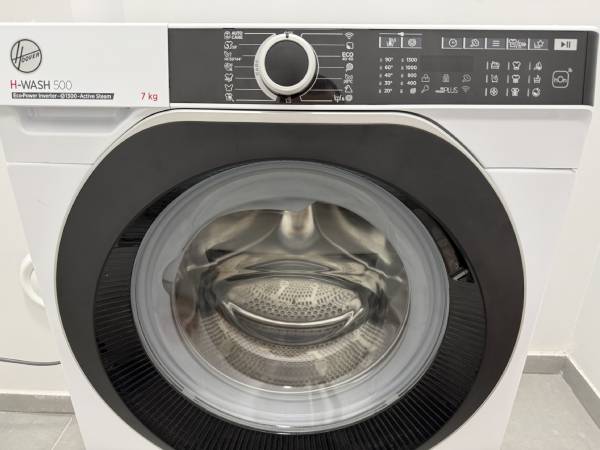
The following chart shows the distribution of noise levels among energy-efficient A-rated washing machines.
[vertical-chart-36919084]
Washing machines are classified into the following noise emission categories.
- Class A (36%): Machines operating below 73 dB.
- Class B (36%): Noise levels between 73 and 76 dB.
- Class C (26%): Noise levels between 77 and 80 dB.
- Class D (2%): Machines reaching or exceeding 81 dB.
Consider also the washing noise level, which has less impact than spin noise but is still relevant. In energy class A washing machines, the washing noise level usually ranges from 47 to 58 dB, with an average of 51 dB (2 dB lower than the market average of 53 dB).
Noise level is important if you plan to use the washing machine in spaces requiring quiet operation, such as small apartments or near living areas.
Are A-rated washing machines more expensive?
Washing machines with energy efficiency class A are generally more expensive. On average, their price is around £460, approximately £80 more than the market average of £380.
The following cost differences can be observed between different energy classes.
- Class B washing machines cost approximately £430 (7% less than class A),
- Class C machines have an average price of £370 (18% less),
- Class D washing machines are the cheapest, with an average price of £310 (33% less).
While high-efficiency washing machines tend to be more expensive, there is not always a direct relationship between price and energy consumption. For example, the correlation between price and energy consumption for 9 kg washing machines is moderate, with a value of 0.41. More expensive models often include advanced technologies such as inverter motors and load detection systems, which help reduce energy consumption, but it is possible to find A-rated washing machines at competitive prices.
The following chart shows the price distribution of A-rated washing machines.
[vertical-chart-74187791]
Opting for a washing machine with a higher energy class can be cost-effective in the long term. An A-rated washing machine consumes approximately 49 kWh per 100 cycles, while a class D machine consumes about 69 kWh per 100 cycles. Over 12 years, with 220 cycles per year, a class A washing machine will consume approximately 1293 kWh, compared to 1821 kWh for a class D machine. This difference of 528 kWh translates into an energy saving of around £150 (considering a cost of £0.30/kWh). If the initial price difference between a class A and a class D machine is less than £150, choosing the A-rated washing machine will be advantageous in the long run.
The cheapest washing machines with energy class A are as follows.
- Bosch WGE03408GB Series 2 (~£390, 8 kg)
- Candy RapidÓ RO 1696DWMC7/1-80 (~£390, 9 kg)
- Haier HW120-B14979 I-Pro Series 7 (~£380, 8 kg)
A-rated washing machines with the best value for money are as follows.
- Haier HW80-B14959S8U1 I-Pro Series 5 (Value for money: 7.98 points; Capacity: 8 kg)
- Candy Smart Inverter CS1410TXME (Value for money: 7.87 points; Capacity: 10 kg)
- Candy RapidÓ RO 1696DWMC7/1-80 (Value for money: 7.7 points; Capacity: 9 kg)
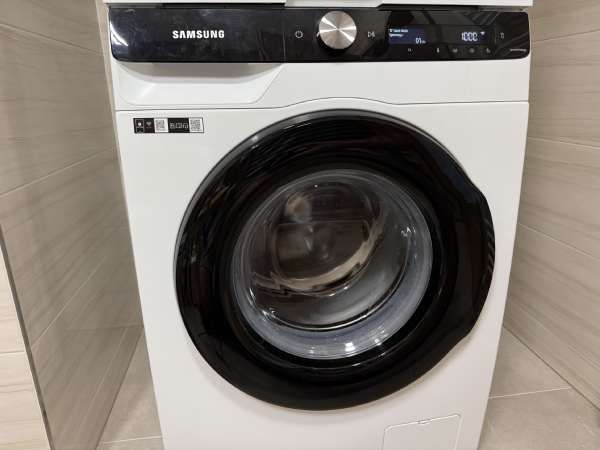
What are the most energy-efficient washing machine brands?
The following brands are the most energy-efficient (consume the least energy per 100 cycles).
- Gorenje (Average energy consumption: 45 kWh/100 cycles per 100 cycles)
- Cecotec (Average energy consumption: 47 kWh/100 cycles per 100 cycles)
- Bosch (Average energy consumption: 49 kWh/100 cycles per 100 cycles)
What influences a washing machine’s energy consumption?
A washing machine's energy consumption varies based on several factors, including load type, capacity, motor type, spin speed, and available features, such as laundry detection systems, load balancing systems, and steam technology. The choice of washing programs also matters: longer or intensive cycles and higher temperatures increase energy consumption.
Which features affect a washing machine’s energy consumption the most?
The following features have the greatest impact on a washing machine’s energy consumption.
- Inverter motor (found in 98% of A-rated washing machines compared to 74% of washing machines overall): inverter motors optimise energy use by adjusting speed according to the load.
- Load detection system (present in 99% of A-rated washing machines): this system detects the weight of the laundry and adjusts water and energy usage accordingly.
- Load balancing system (found in 35% of A-rated washing machines): the system distributes laundry evenly in the drum, reducing energy required for spinning and minimising vibrations.
- Pre-mix technology (featured in 34% of A-rated washing machines): this technology mixes detergent and water before they reach the drum, improving washing efficiency with shorter cycles and lower energy use.
- Steam technology (available in 86% of A-rated washing machines compared to 56% of washing machines overall): steam helps clean clothes at lower temperatures. It penetrates fabrics, reducing the need for high-temperature cycles and saving energy.
- Foam control system (present in 81% of A-rated washing machines): this system monitors foam levels in real-time and reduces excess foam through additional rinse cycles or spin adjustments.
- Automatic dosing system (found in 17% of A-rated washing machines): dispenses the correct amount of detergent, avoiding waste and enabling more efficient washing cycles with reduced energy consumption.
- Wi-Fi connectivity (included in 40% of A-rated washing machines compared to 23% of washing machines overall): while it does not directly impact energy efficiency, Wi-Fi connectivity allows energy monitoring and scheduling cycles during off-peak hours, optimising overall energy usage.
- AI technology (available in 17% of A-rated washing machines compared to 11% of washing machines overall): artificial intelligence optimises washing programs by learning user preferences, adjusting cycles to maximise efficiency and reduce energy consumption over time.
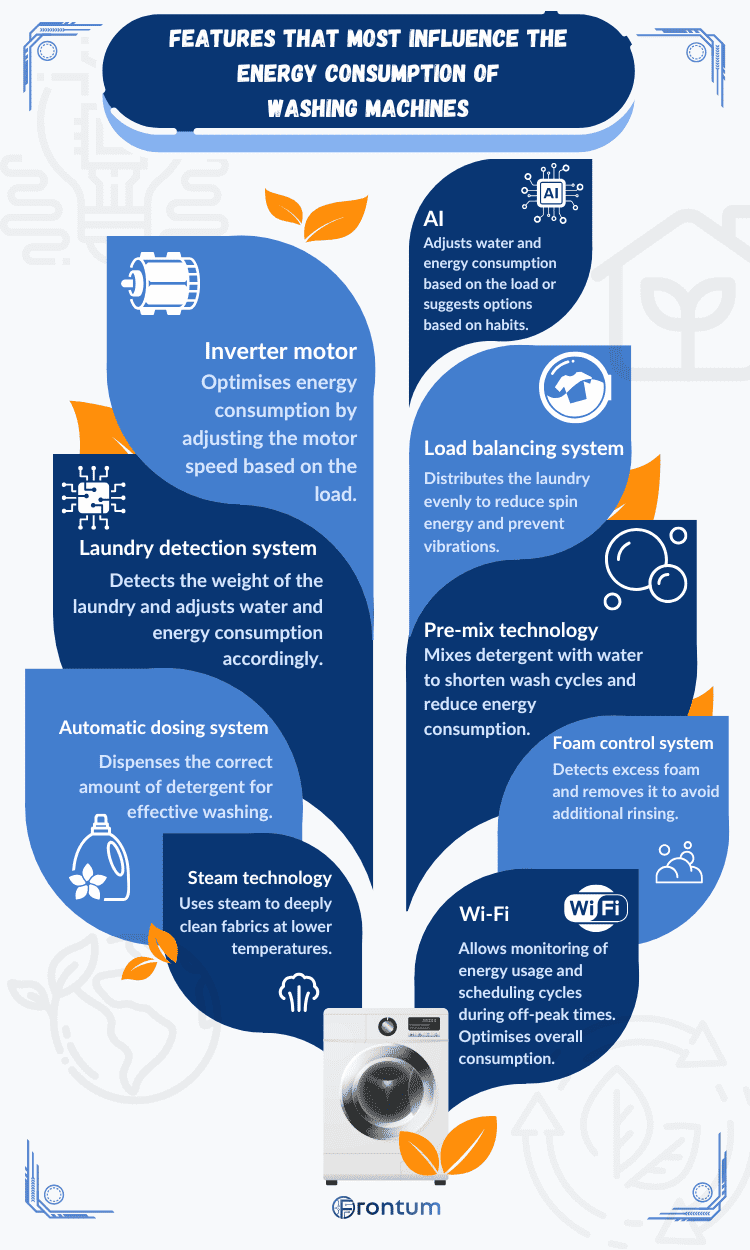
Although the following features do not directly influence energy consumption, they are commonly found in A-rated washing machines.
- Memory function (in 44% of A-rated washing machines)
- Smart diagnosis function (in 52% of A-rated washing machines)
- AquaStop system (in 37% of A-rated washing machines)
- Self-cleaning function (in 72% of A-rated washing machines)
- Automatic drawer cleaning (in 15% of A-rated washing machines)
The chart shows the distribution of washing program features for A-rated washing machines.
[vertical-chart-38405077]
The following list includes A-rated washing machines with the highest number of features.
- Hoover H-WASH 500 HWPD610AMBC/1-S (24 features, 10 kg)
- Samsung WW90DG6U85LEU1 WW6400D (24 features, 9 kg)
- Hoover H-WASH 500 HWB414AMC (23 features, 14 kg)
Are washing machines with multiple orograms more energy-efficient?
Washing machines with more washing programs do not necessarily guarantee higher energy efficiency. However, having more settings allows you to adapt washing to the type of load, potentially reducing energy consumption. For example, using cycles at lower temperatures can help conserve energy.
A study by the Testex Laboratory for GINETEX revealed that washing at 30°C instead of 40°C results in 30% energy savings. Conversely, using a 60°C cycle can increase energy consumption by up to 50%, and at 90°C, consumption can more than double. High temperatures should therefore be reserved for heavily soiled items.
Washing duration also impacts energy consumption. A quick cycle can reduce energy use by 20-50%. Beware of cycles like prewash, which can increase energy consumption by 15-20% (0.05-0.06 kWh/kg).
Consider always using a full or nearly full load. Washing at half capacity consumes 50-70% more energy per kilogram of fabric.
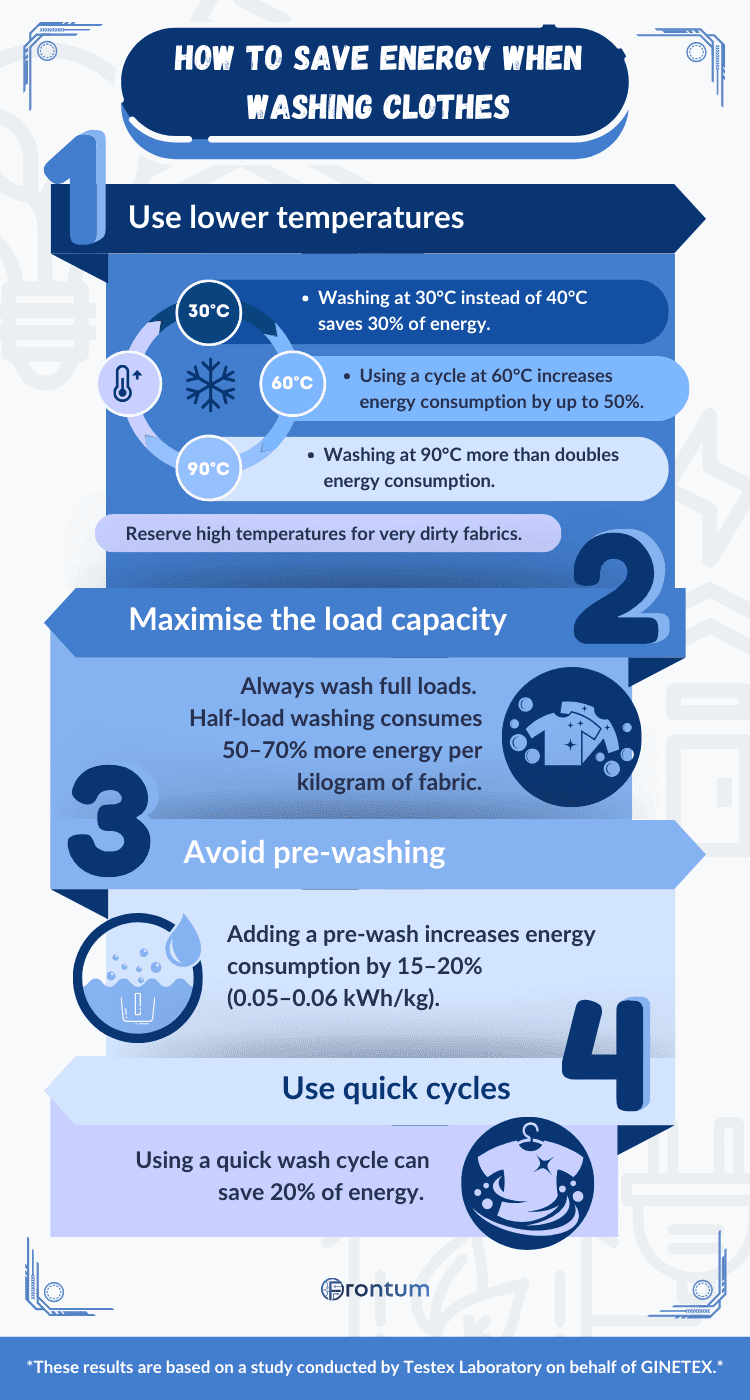
What are the most common washing programs in A-rated washing machines?
A-rated washing machines feature 10-25 washing programs, averaging 15 (in line with market standards). Washing machines with 7 kg capacity typically include 1-3 quick cycles lasting under 1 hour. The washing programs in these machines are similar to those in other capacity models, with only slight differences.
Common programs in A-rated washing machines include Cotton, Eco 40-60, Synthetics, Quick, Mixed, and Wool. Many models also offer specialised programs such as Jeans (54%), Shirts (50%), Duvets (56%), Baby Care (49%), Outdoor/Sport (73%), Hygiene (75%), and Prewash (81%).
Consider available programs if you require specialised cycles that you will frequently use. In specific situations, using a specialised program can be more effective and allow for greater energy savings.
Which type of washing machine is more energy-efficient: top-load or front-load?
Front-load washing machines are more energy-efficient than top-load washing machines. The distribution of energy classes for both types is as follows.
- Class A: 44% of front-load washing machines, none of top-load washing machines
- Class B: 17% of front-load washing machines, 19% of top-load washing machines
- Class C: 13% of front-load washing machines, 21% of top-load washing machines
- Class D: 19% of front-load washing machines, 15% of top-load washing machines
- Class E: 5% of front-load washing machines, 15% of top-load washing machines
- Class F: 1% of front-load washing machines, 29% of top-load washing machines
- Class G: none of front-load washing machines, 2% of top-load washing machines
Front-load washing machines consume an average of 54 kWh per 100 cycles, while top-load machines consume 65.5 kWh per 100 cycles. Front-load models are therefore about 19% more energy-efficient.
However, note that A-rated front-load washing machines consume about 9% more water per cycle than top-load models (47 L vs 43 L). This difference is linked to their typically larger capacity, as higher-capacity washing machines use more water.
The best front-load washing machines with energy class A are as follows.
- Samsung WW90DG6U85LEU1 WW6400D (Overall score: 8.5 points, Capacity: 9 kg)
- Samsung WW90T554DAN/S1 WW5500T (Overall score: 8.48 points, Capacity: 9 kg)
- Samsung WW90T684DLN WW6000T (Overall score: 8.37 points, Capacity: 9 kg)
Are larger capacity washing machines more energy-efficient?
Larger capacity washing machines are more energy-efficient in terms of kWh per kilogram of laundry. For example, 68% of washing machines with a 9 kg capacity achieve an A energy rating, compared to only 39% of 8 kg models and 14.5% of 7 kg models.
The following chart shows the capacity distribution among A-rated washing machines.
[pie-chart-11151398]
There is no direct correlation between capacity and absolute energy consumption. Although it might seem that larger capacity washing machines consume more energy, the data shows a different trend.
Average energy consumption for different capacities is as follows.
- 7 kg: 59 kWh per 100 cycles
- 8 kg: 54 kWh per 100 cycles
- 9 kg: 49 kWh per 100 cycles
- 10 kg: 51 kWh per 100 cycles
- 11 kg: 53 kWh per 100 cycles
9 kg washing machines consume less energy on average than 7 or 8 kg models. Energy consumption tends to decrease up to 9 kg models, then starts to increase. This is because larger washing machines often incorporate advanced technologies like automatic load detection and more efficient motors that optimise energy use. 9 kg washing machines strike an optimal balance: they include these technologies without having to handle excessively large loads that require more energy. Consequently, 43% of A-rated washing machines are 9 kg models, while 26% are 8 kg models.
A-rated washing machines tend to have a drum volume of around 61 litres, compared to 58 litres for other washing machines.
To optimise energy consumption, always wash full or nearly full loads. Washing at half capacity can increase energy use by 50-70% per kilogram of fabric compared to a full load.
The best 7 kg washing machines with energy class A are as follows.
- Midea MF10EW70BA (Overall score: 6.66 points)
- Hoover H-WASH 500 HW437AMC/1-S (Overall score: 8.03 points)
- Haier HW70-B12636N Series 636 (Overall score: 7.98 points)
The following are the best 8 kg A-rated washing machines.
- Samsung WW80CGC04DABEU WW5000C (Overall score: 8.18 points)
- Haier HW80-B14959S8U1 I-Pro Series 5 (Overall score: 7.79 points)
- Electrolux EW8F384BI UltraCare 800 (Overall score: 7.76 points)
The best 9 kg A-rated washing machines are as follows.
- Samsung WW90DG6U85LEU1 WW6400D (Overall score: 8.5 points)
- Samsung WW90T554DAN/S1 WW5500T (Overall score: 8.48 points)
- Samsung WW90T684DLN WW6000T (Overall score: 8.37 points)
The following list shows the best 10 kg A-rated washing machines.
- Hoover H-WASH 500 HWPD610AMBC/1-S (Overall score: 7.68 points)
- Candy Smart Inverter CS1410TXME (Overall score: 7.57 points)
- Hisense WFQA1014EVJM QA Serie (Overall score: 7.4 points)
Are there slim A-rated washing machines?
It is possible to find many slim washing machines in class A with a depth between 45 and 50 cm. However, no slim washing machines with a depth of less than 45 cm have been identified in this energy class.
Does spin efficiency class affect a eashing machine’s energy efficiency?
The spin efficiency class can influence a washing machine's energy consumption, but several factors are involved. Higher spin speeds lead to better spin efficiency, removing more water from clothes. This increases electricity use but can reduce drying times, potentially lowering overall energy consumption.
A-rated washing machines usually have a spin efficiency class of A (10% of washing machines) or B (87% of washing machines). There is no direct correlation between spin efficiency class and the energy class of a washing machine. Across all energy classes, 85% of washing machines have a spin efficiency class of B, followed by 10% with class C and 5% with class A.
The distribution of spin efficiency classes for A-rated washing machines is illustrated in the following chart.
[pie-chart-82478026]
The spin efficiency class is related to maximum spin speed. In A-rated washing machines, the maximum speed ranges from 1200 to 1600 RPM. The most common is 1400 RPM (60%), followed by 1200 RPM (23%). At 1600 RPM, the washing machine leaves 43% moisture in clothes; at 1400 RPM, 50%; and at 1200 RPM, 53%.
For those frequently washing delicate items, the minimum spin speed is an important factor, as lower speeds (e.g., 400 RPM) are more suitable for sensitive fabrics. In class A washing machines, the minimum spin speed ranges from 400 to 800 RPM, with 70% of models reaching a minimum of 400 RPM, ideal for protecting delicate garments.

